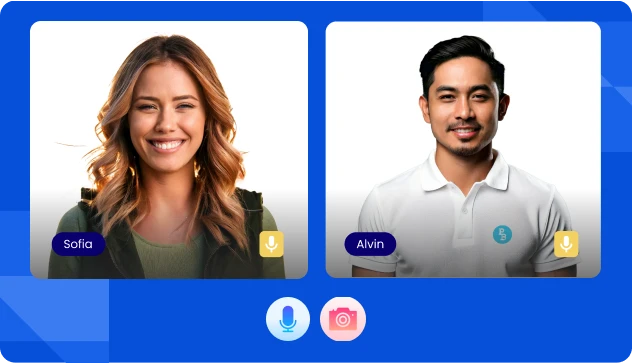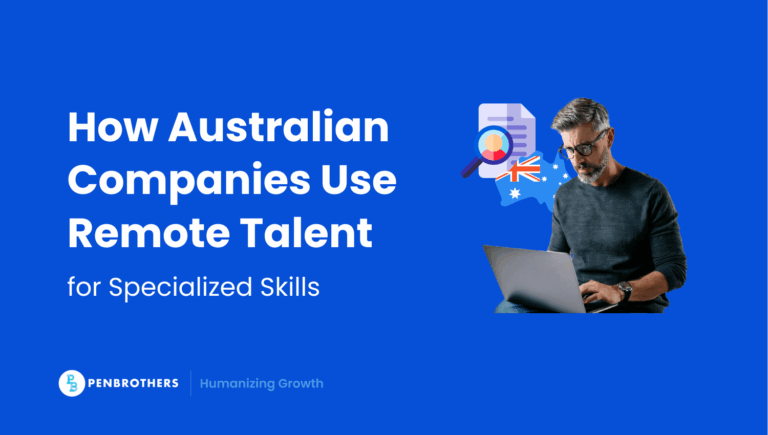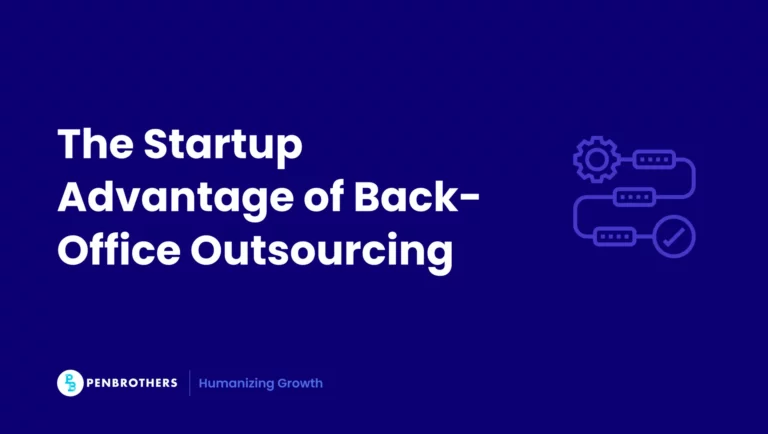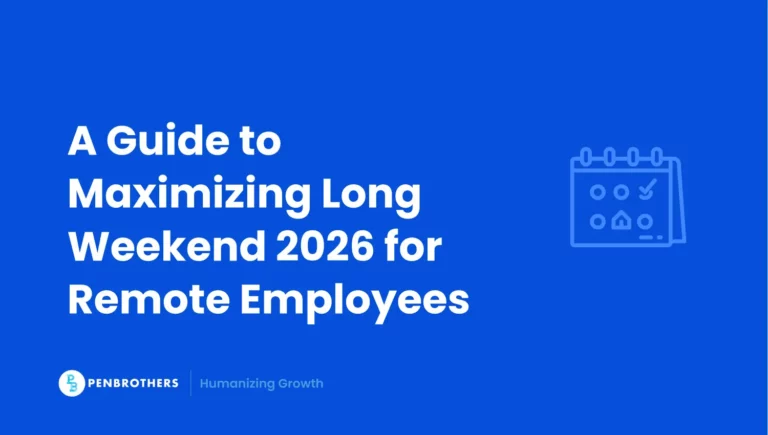In today’s hypercompetitive job market, hiring isn’t just about filling seats. It’s about future-proofing your workforce. That means looking beyond resumes and certifications. HR leaders and recruiters are under pressure to identify candidates who can thrive in fast-changing environments, not just survive. This is where career readiness comes in. And at Penbrothers, we believe it’s a conversation worth having.
What Is Career Readiness? A Modern Definition
Career readiness is more than just being employable. It’s about equipping individuals with the tools to build sustainable, evolving careers. Unlike job readiness,
which focuses on immediate fit, career readiness is long-term. It reflects a candidate’s ability to learn, adapt, collaborate, and grow.
According to the National Association of Colleges and Employers (NACE), career readiness involves mastering competencies like communication, critical thinking, professionalism, and teamwork.
This matters for HR leaders. Not just because it’s a better predictor of employee performance, but because it shapes how companies compete.
The Core Components of Career Readiness
1. Hard Skills
Hard skills are specific, measurable competencies tied directly to a role, think data analysis, coding, or project management. Certifications, degrees, and licenses can signal a baseline of qualification. But in practice, what sets candidates apart is how they apply those skills in real-world scenarios, under pressure, with limited resources, or on fast-moving teams. Especially in remote and offshore contexts, where visibility is limited, demonstrated skill execution matters more than credentials alone.
2. Soft Skills
Soft skills like communication, leadership, adaptability, and emotional intelligence, define how people show up at work. They shape how candidates manage conflict, give feedback, and collaborate across time zones or cultures.
In uncertain or high-growth environments, soft skills often become the difference between someone who copes and someone who leads.
3. Cultural Fit
Hiring someone who “fits” isn’t about shared hobbies. It’s about alignment with your company’s values, pace, and behavioral norms. Candidates who share your organization’s principles whether that’s radical transparency, customer obsession, or bias for action, tend to integrate faster and stick longer. In distributed teams especially, cultural cohesion is essential for trust, accountability, and performance.
4. Learning Agility
Skills get outdated. Mindsets don’t. Learning agility is the ability to quickly absorb new knowledge, pivot roles, and take on cross-functional challenges. It’s a key predictor of leadership potential and is especially critical in startups or offshore teams where agility can’t be optional, it’s operational.
How to Assess Career Readiness in Candidates
Recruiting through the lens of career readiness forces clarity, not just on who you’re hiring, but on why they’ll succeed. It’s not just about credentials. It’s about capability in context.
Here’s how to make that assessment more meaningful:
1. Behavioral Interviews and Situational Simulations
Go beyond the résumé. Ask candidates how they’ve navigated ambiguity, failure, or high-stakes decisions. Then simulate the role. Present real scenarios, cross-functional challenges, or quick-turn tasks. What you’re looking for: not perfection, but how they think, adapt, and collaborate under pressure.
2. Skills Gap Analysis
Start by mapping the actual competencies needed for the role. Then assess each candidate’s proximity to that benchmark. At Penbrothers, we use skills gap analysis not just at hiring but to shape custom upskilling tracks post-hire. It’s a practical way to evaluate fit, and an even better way to fast-track performance. This guide to role descriptions shows how aligning expectations helps close skill gaps faster.
3. Structured Reference Checks
Generic references don’t reveal much. Structured ones do. Ask former managers about the candidate’s coachability, resilience, and team contribution, not just punctuality or reliability. This is where signals of learning agility or leadership potential often surface. These HR questions can surface deeper signals of potential.
4. Cultural Fit Assessment
Cultural misalignment is one of the biggest (and costliest) reasons new hires fail. Use scorecards, peer interviews, or culture-first questions to evaluate alignment with your team’s core values and pace. The goal isn’t to hire clones, it’s to hire people who can thrive in your environment.
5. Layer Qualitative with Quantitative
Where possible, pair interviews with data, past performance metrics, goal attainment rates, or structured assessments. This blend of insight makes your hiring decision more robust, and your onboarding strategy more informed.
Bonus: Evaluate for Growth, Not Just Fit
The best candidates aren’t “ready-made”, they’re ready to grow. Focus on trajectory. Can this person grow into a broader role? Will they lead, mentor, or stretch cross-functionally six months in? That’s a career-ready mindset and that’s what scales with your business.
How to Enhance Career Readiness Within Your Workforce
Career readiness doesn’t end at the offer letter. It deepens through the daily work of developing potential. And that’s where HR earns its strategic seat.
At Penbrothers, we’ve seen that teams succeed not just because they’re staffed but because they’re supported to grow. Here’s how to build a workforce that’s ready for what’s next:
1. Onboarding That Sets the Bar
Forget the paperwork-heavy, passive onboarding flows.
A career-ready onboarding process aligns expectations, instills company values, and introduces growth pathways from day one. In our offshore programs, we focus on learning mindset, not just job clarity. That orientation shifts how talent contributes from week one.
2. Mentorship and Coaching Early, Not Eventually
You don’t need to wait for leadership roles to build leaders. Match new hires with mentors across teams. Introduce coaching tracks early for high-potential talent. This builds confidence, fast-tracks learning, and reduces dependency on formal training cycles.
3. Create a Culture of Ongoing Upskilling
Career readiness isn’t static. It requires continuous evolution.Build role-based learning tracks that align with your business roadmap. Use quarterly performance reviews to uncover gaps and trigger personalized growth initiatives, not generic workshops. Here’s a guide to job level classifications that helps structure those conversations clearly.
4. Enable Cross-functional Exposure
Let your people step outside their silos. Encourage job shadowing, internal gigs, or cross-department projects that develop business acumen and adaptive thinking. This is critical in scaling companies where agility and shared context often outperform specialization.
5. Tie Learning to Retention and Growth
Upskilling without a path leads to attrition. Pair your L&D programs with visible career frameworks, internal mobility options, and succession planning. At Penbrothers, our offshore teams thrive because they see where their careers can go, not just what task they need to do next.
Career readiness is a shared responsibility.
It’s not HR’s job alone. But HR is uniquely positioned to champion it, operationalize it, and measure its impact.
When you do, you don’t just grow people, you future-proof your teams.
Career Readiness as a Strategic Talent Advantage
Let’s get tactical. Why does career readiness matter beyond buzzwords?
Because it influences outcomes that HR and business leaders actually measure:
- Retention
Employees who feel their skills and growth are prioritized stay longer.
Career-ready environments reduce churn, not just at the entry level, but across all functions. - Internal Mobility
Promotions become faster, smoother, and less risky when your talent bench is trained to step up.
High readiness minimizes ramp-up time and supports long-term succession planning. - Productivity
Career-ready employees onboard faster and deliver value sooner.
They require less handholding and adapt more quickly to shifting priorities. - Employer Brand
Top candidates don’t just want a job. They want to grow.
A clear commitment to development makes your brand more attractive especially in competitive global markets.
Here’s the disconnect: Most outsourcing partners stop at placement.
They fill the seat and move on. The result? Inconsistent performance, high turnover, and limited strategic impact.
Penbrothers is different. We don’t just staff your roles, we shape your team’s potential. From skills gap analysis to performance support and cross-functional exposure, we invest in post-hire success.
Because in offshore staffing, the real value comes after Day One.
Practical Tools & Resources for HR Leaders
Building career readiness at scale takes more than good intentions. It takes systems.
Here are the essential tools top HR teams use to turn potential into performance:
- Career Pathing Frameworks
Set clear expectations for growth with structured templates.
These define what success looks like at each level, so employees and managers stay aligned. - Skills Matrix Tools
Map required competencies by role, then track team capabilities against those benchmarks.
This helps you spot gaps early and personalize development plans. - Digital Learning Platforms
Deliver upskilling programs that are accessible, measurable, and aligned to business goals.
Look for solutions that integrate with your existing HR tech stack and support modular learning. - Structured Onboarding Kits
Standardize onboarding while allowing for role-specific personalization.
These kits should reinforce company culture, performance expectations, and career growth from day one. Read this primer on applying for jobs online, useful for both candidates and hiring managers optimizing onboarding steps.
Final Thoughts
Career readiness isn’t a trend. It’s a necessity.
The best companies hire for potential, not perfection. They build paths for growth, not just pipelines for hiring.
If your workforce strategy still ends at headcount, it’s time to level up. Career-ready teams don’t just meet expectations. They drive transformation.
And if you’re ready to build one, we’re here to help.






